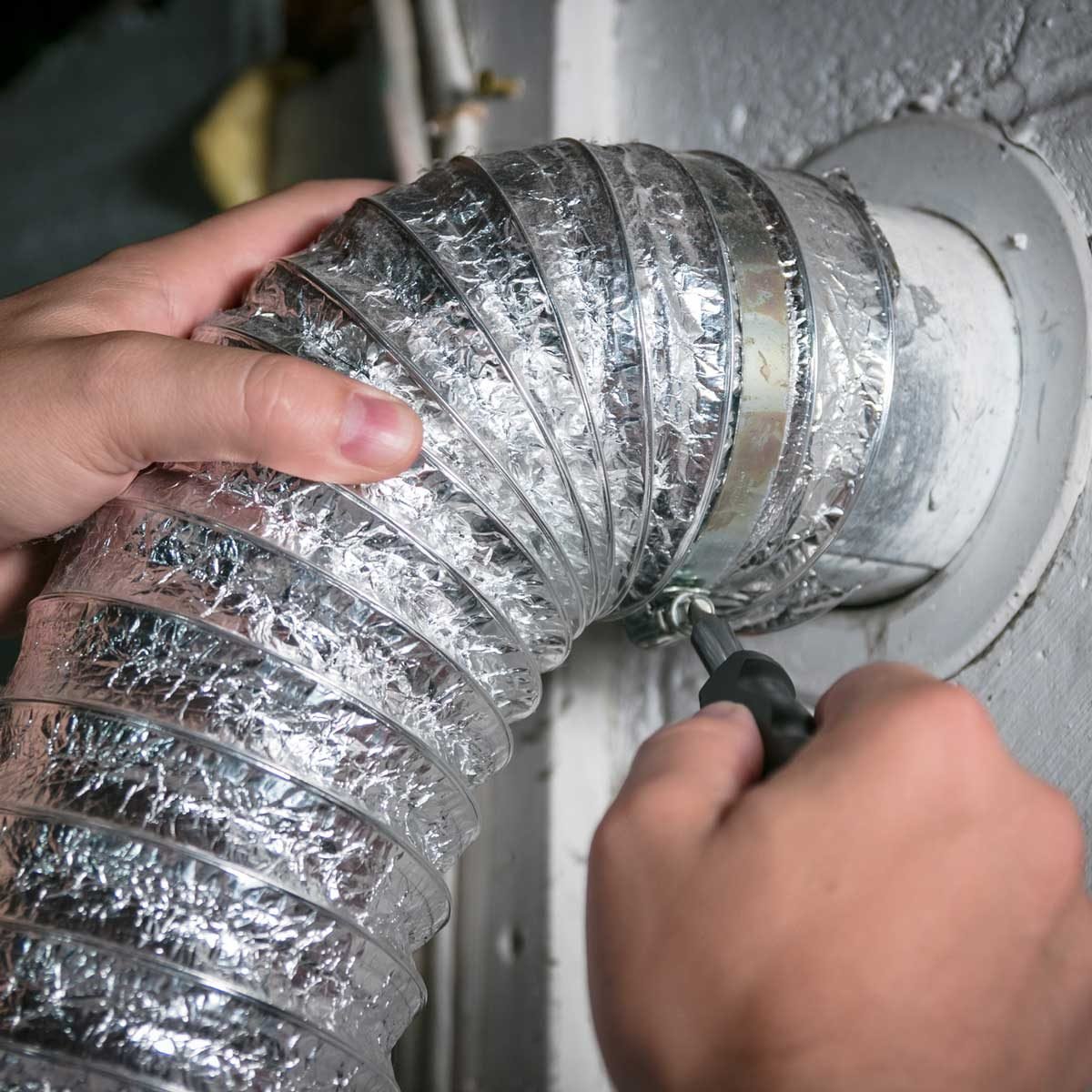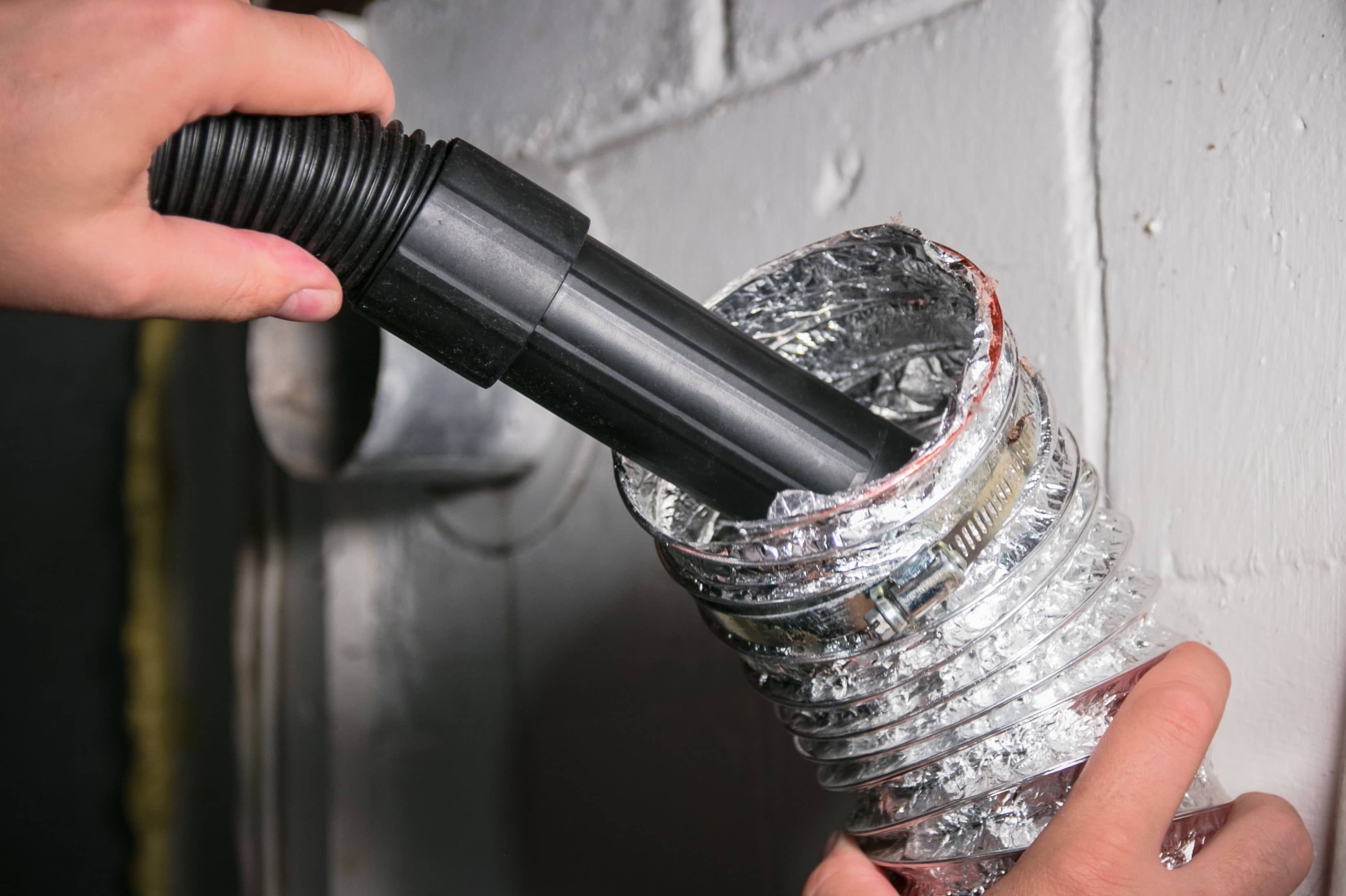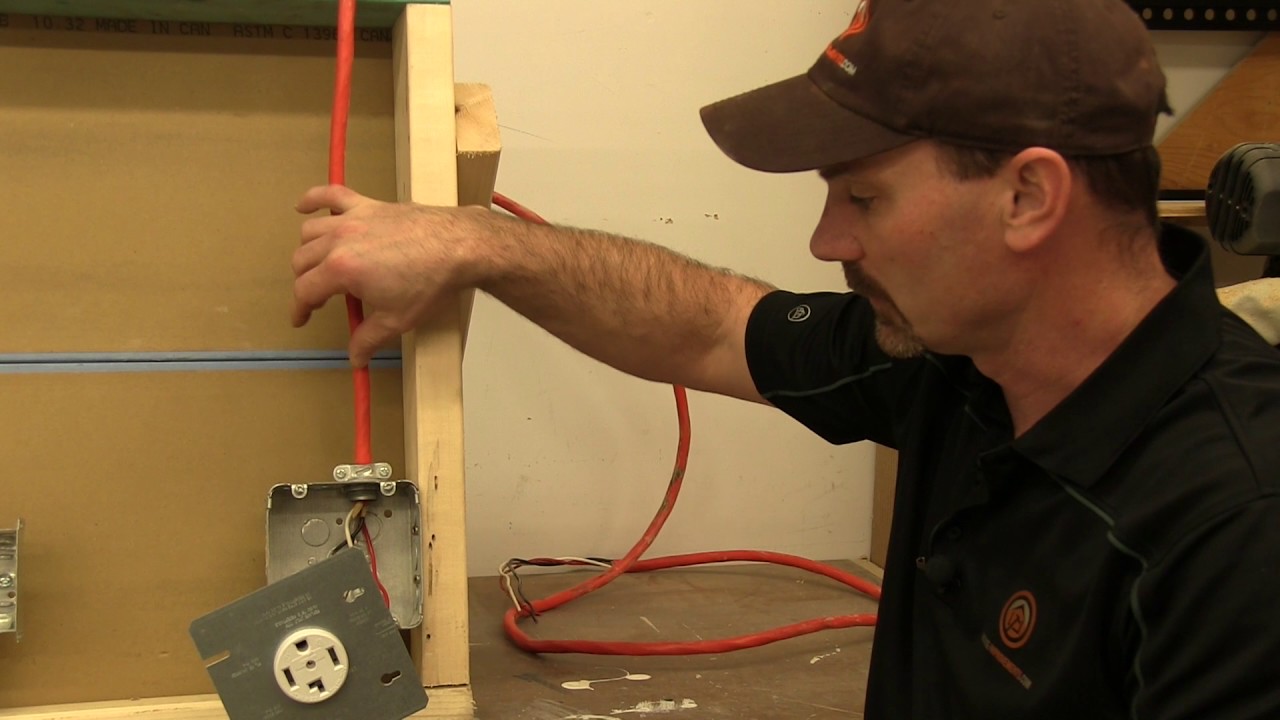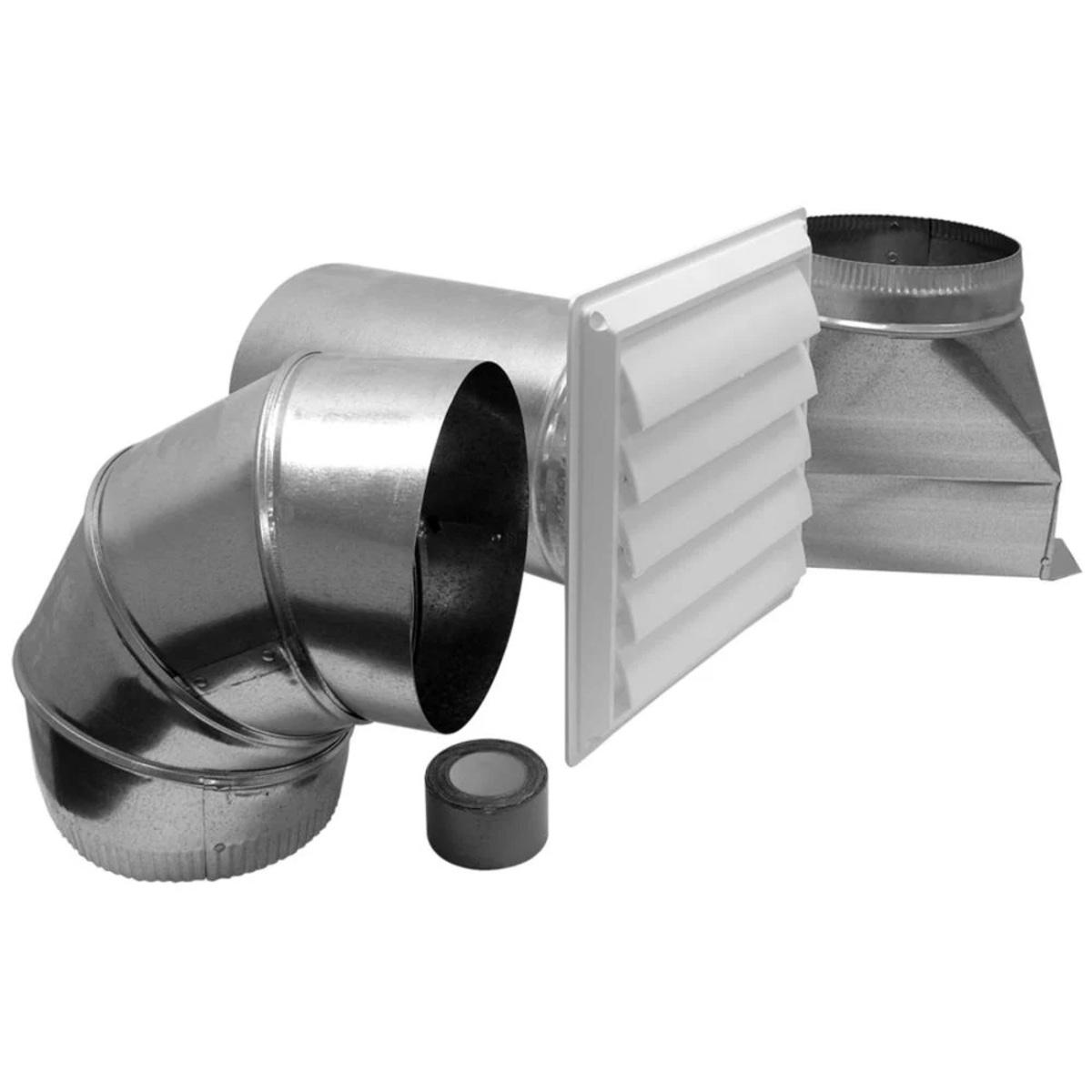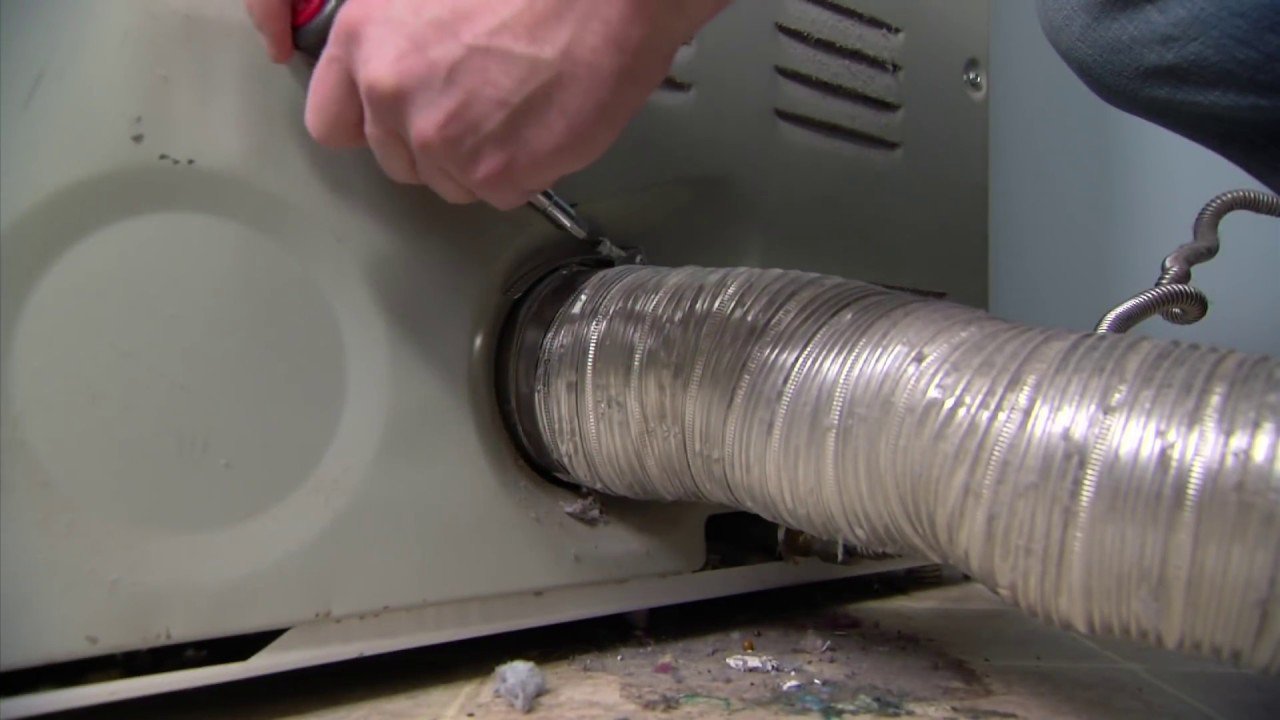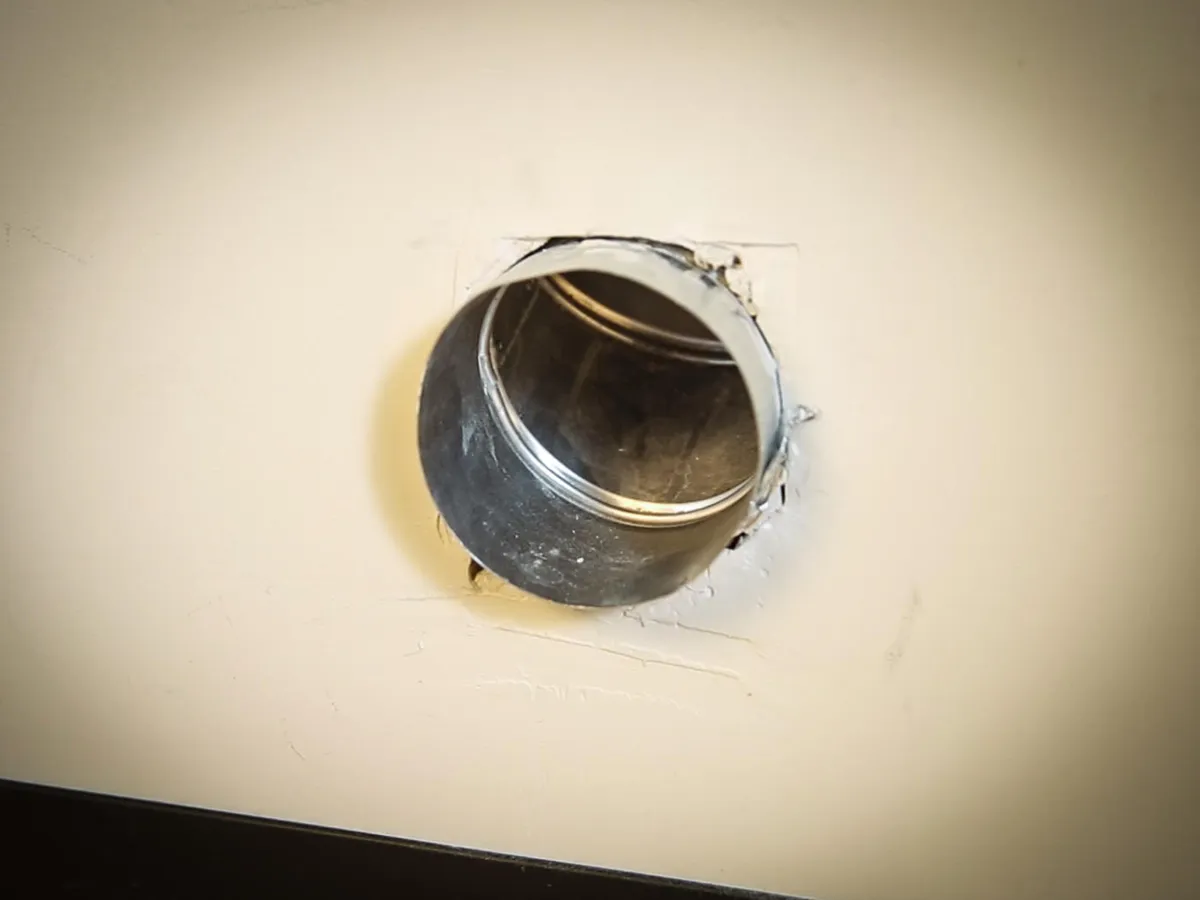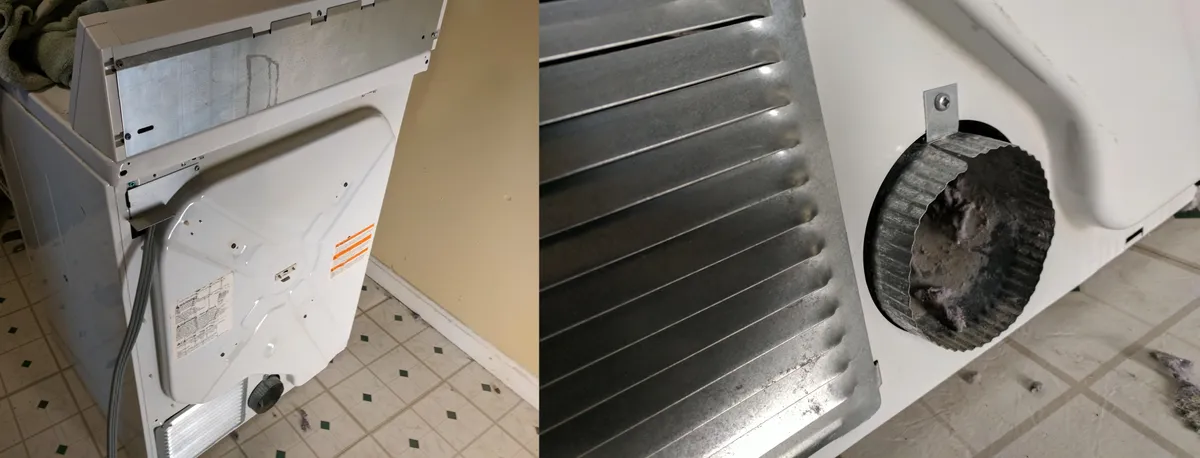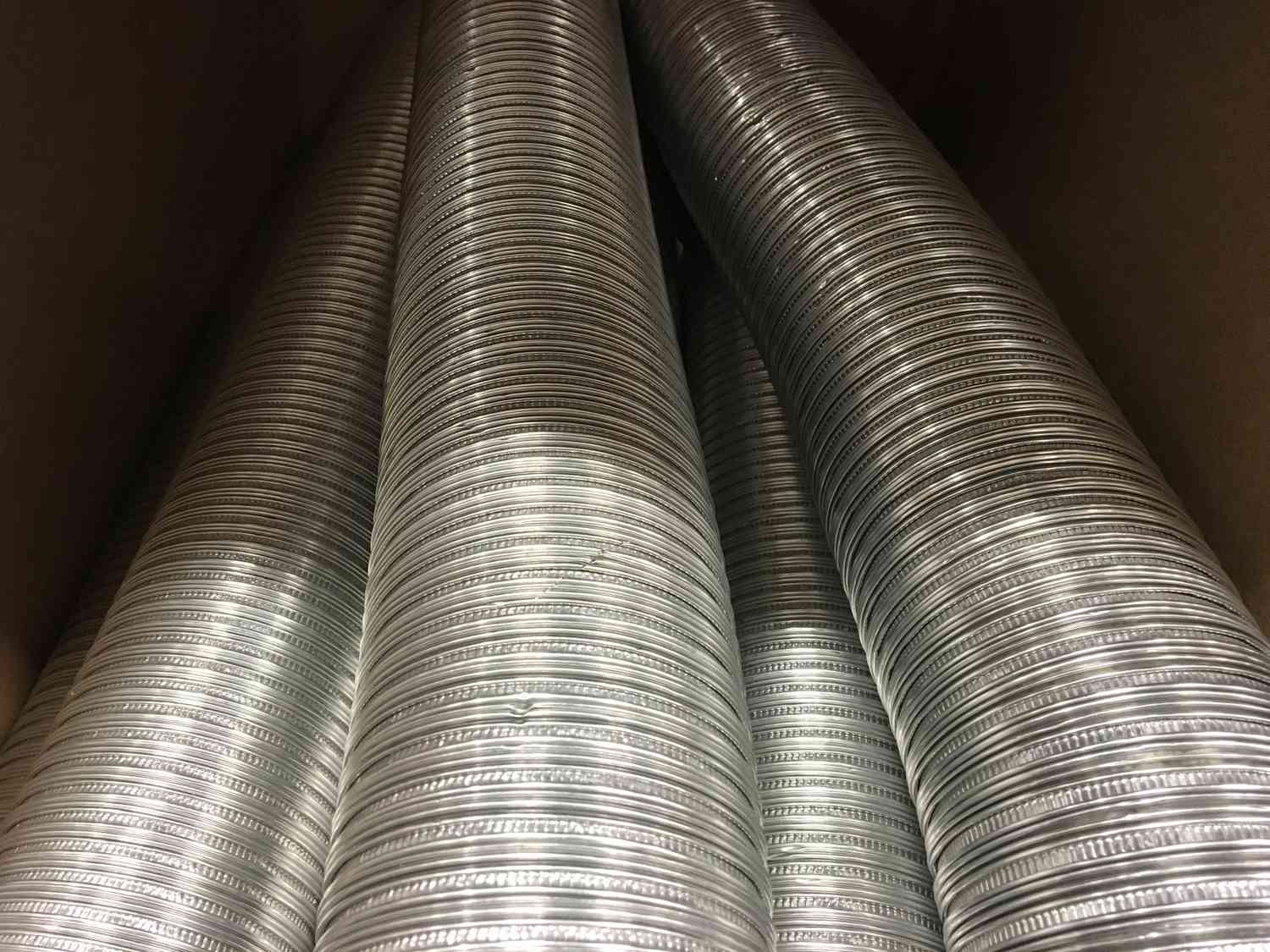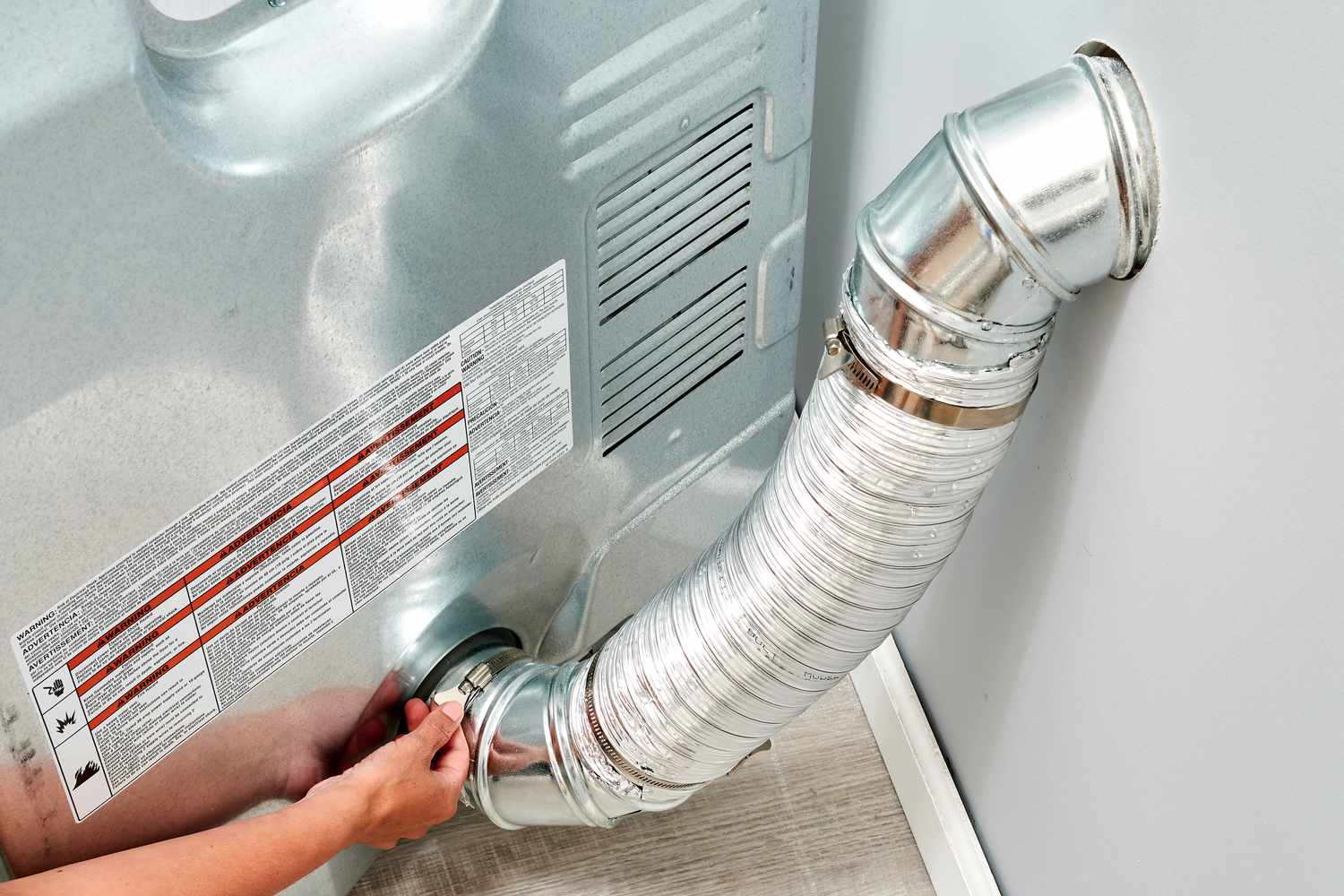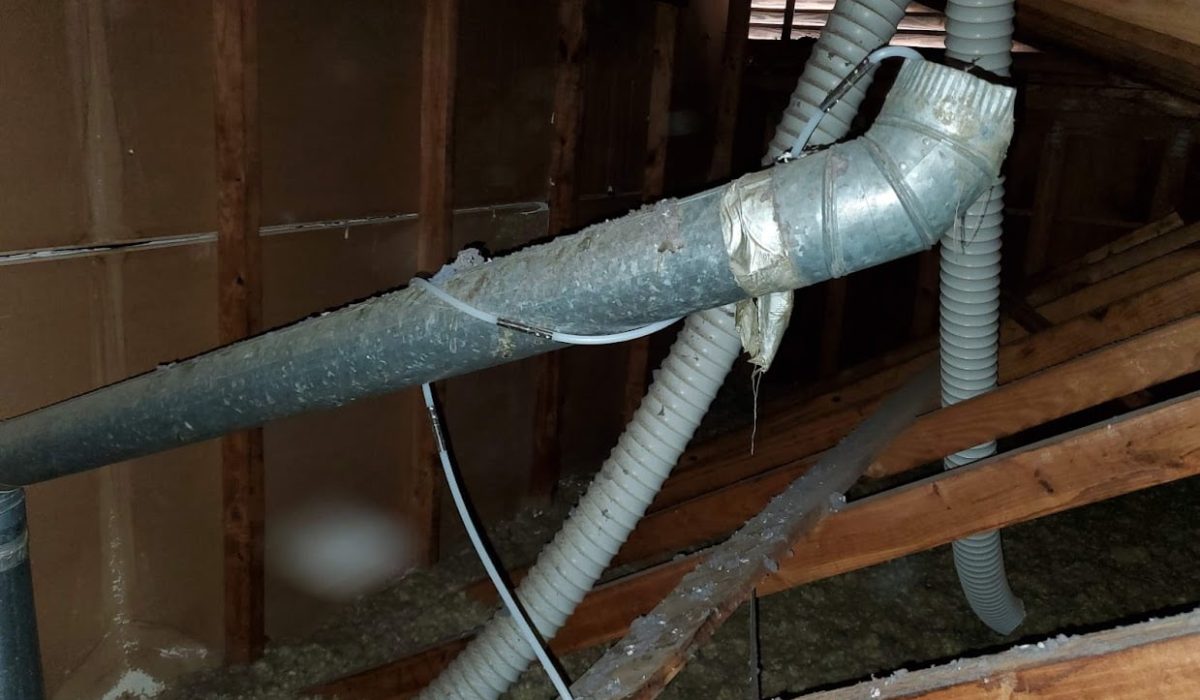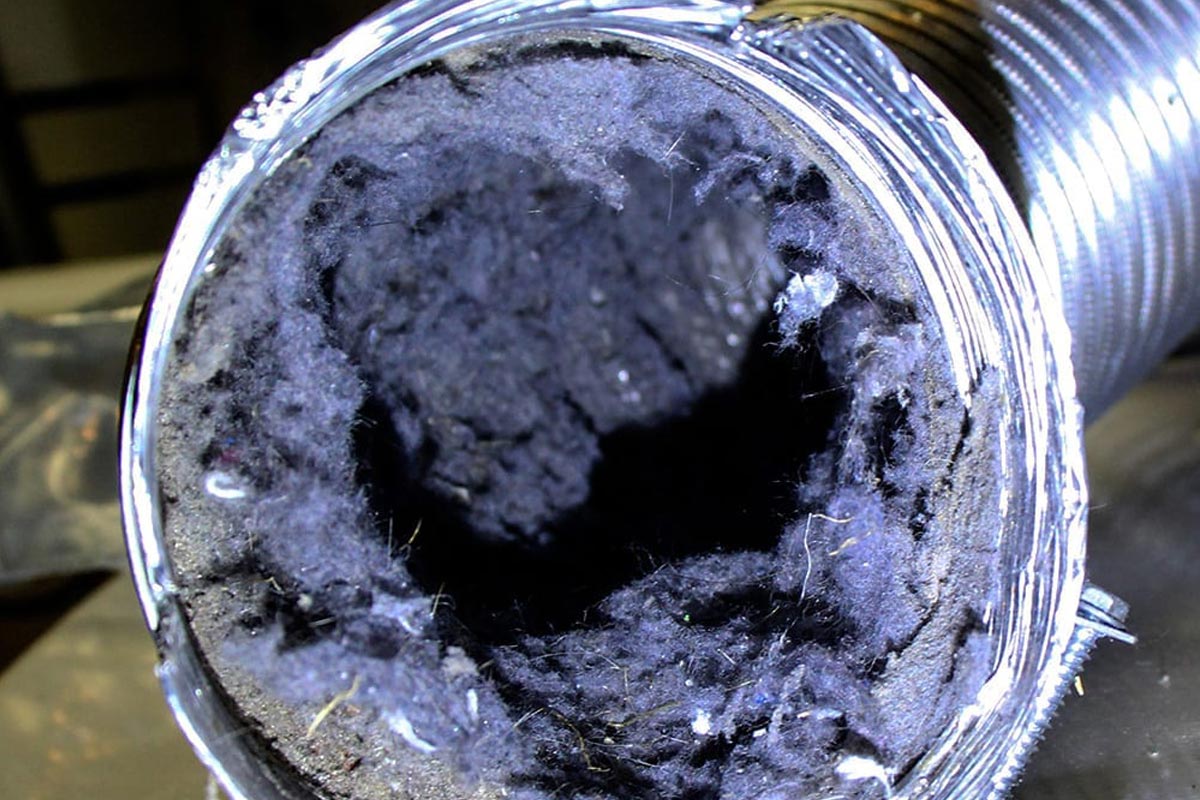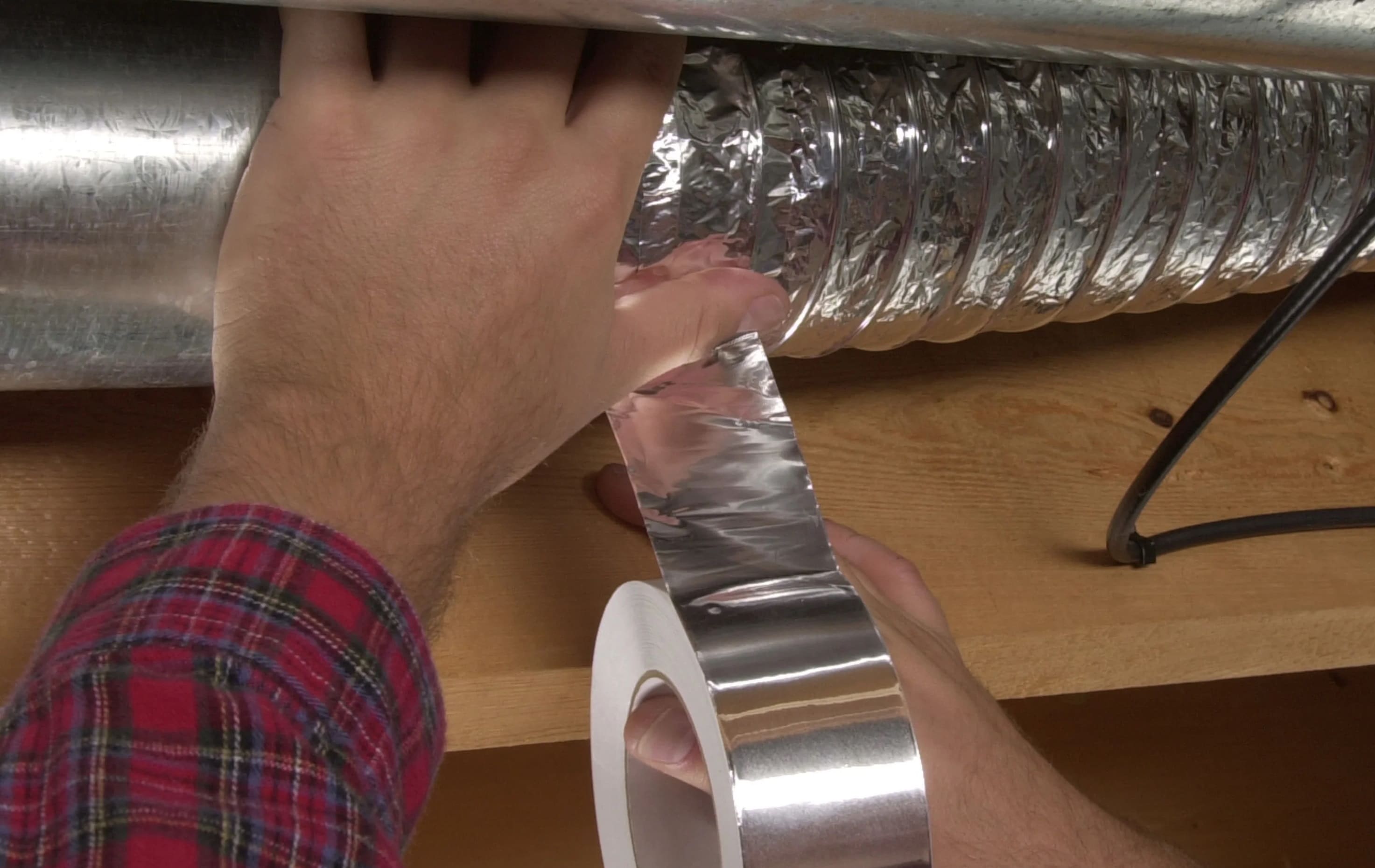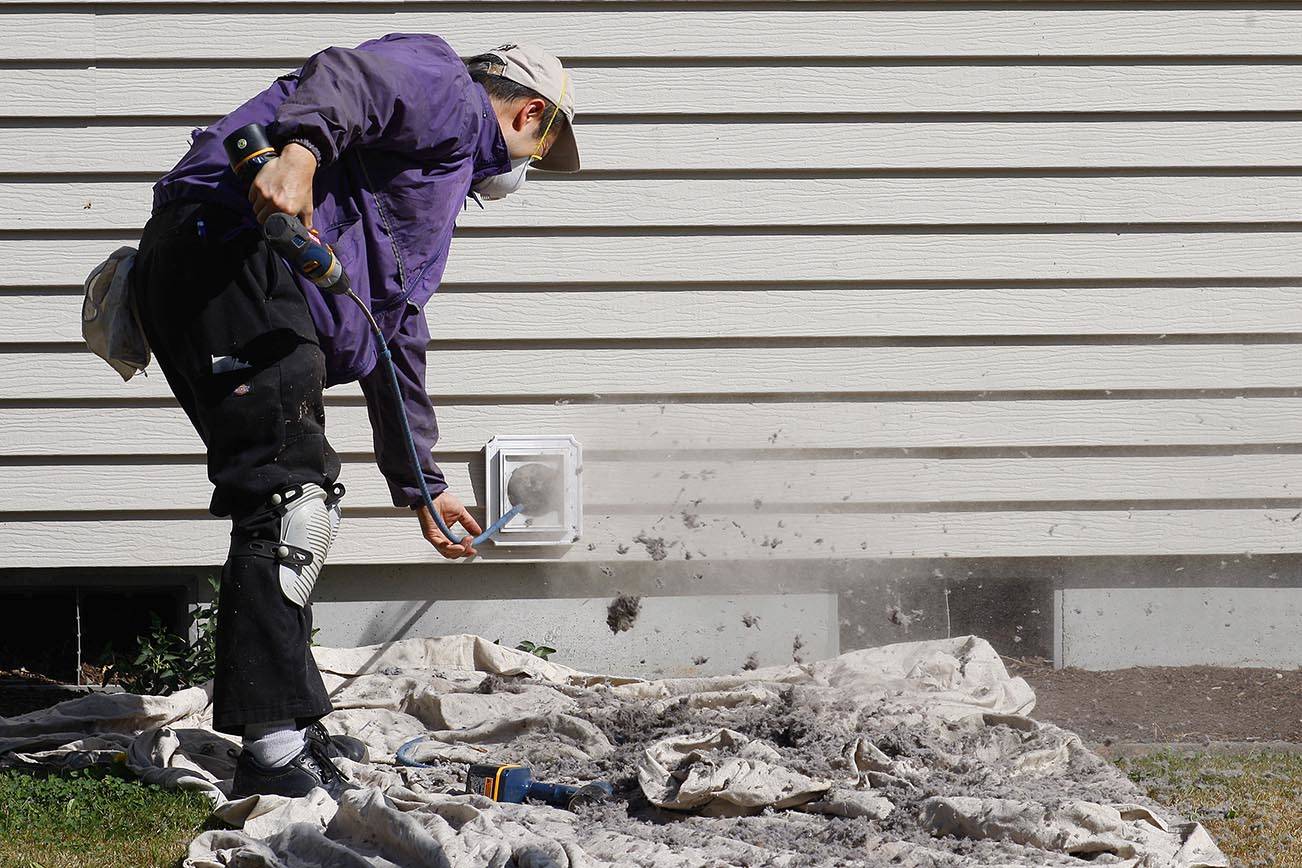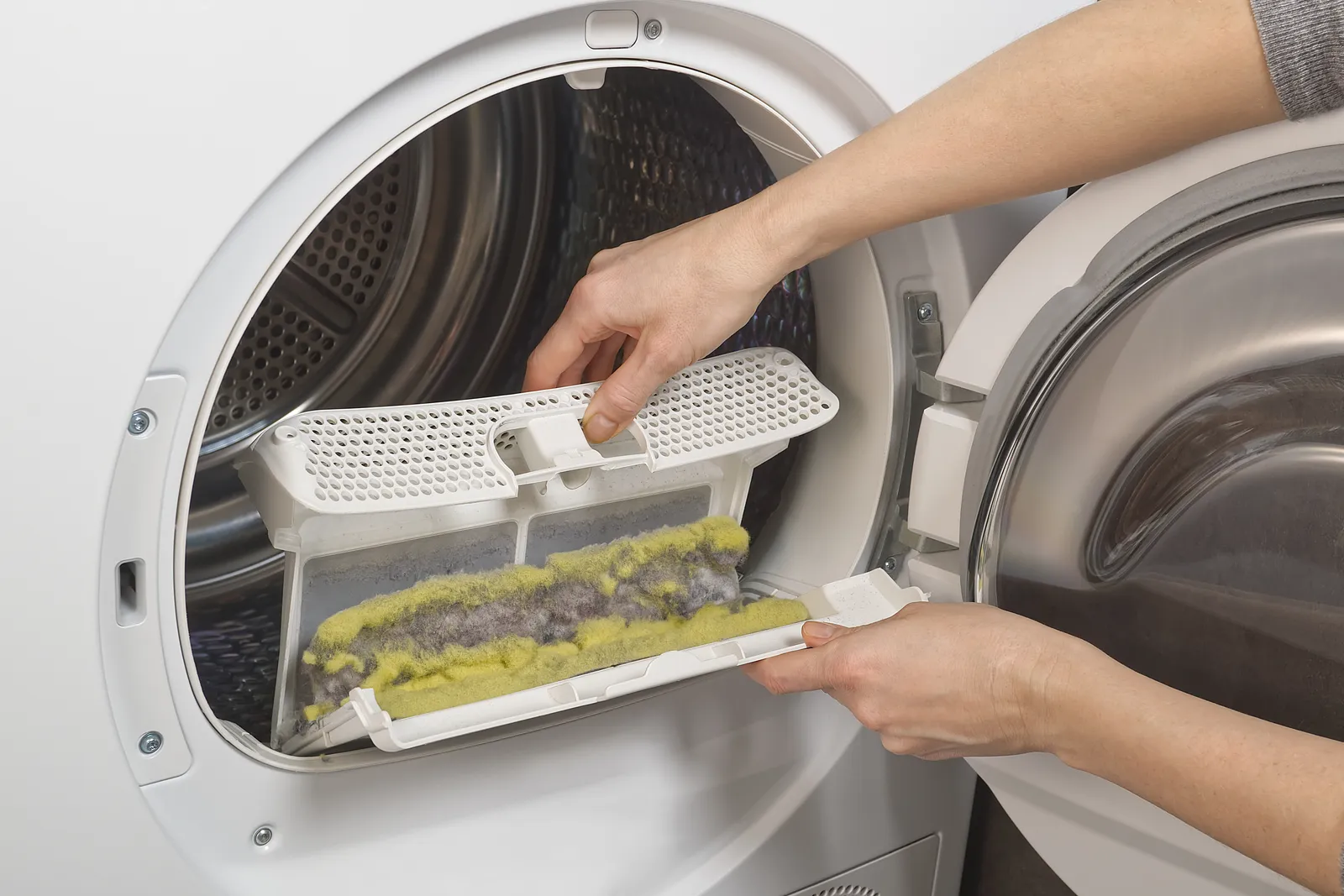Home>Home Maintenance>What Size Is The Dryer Vent
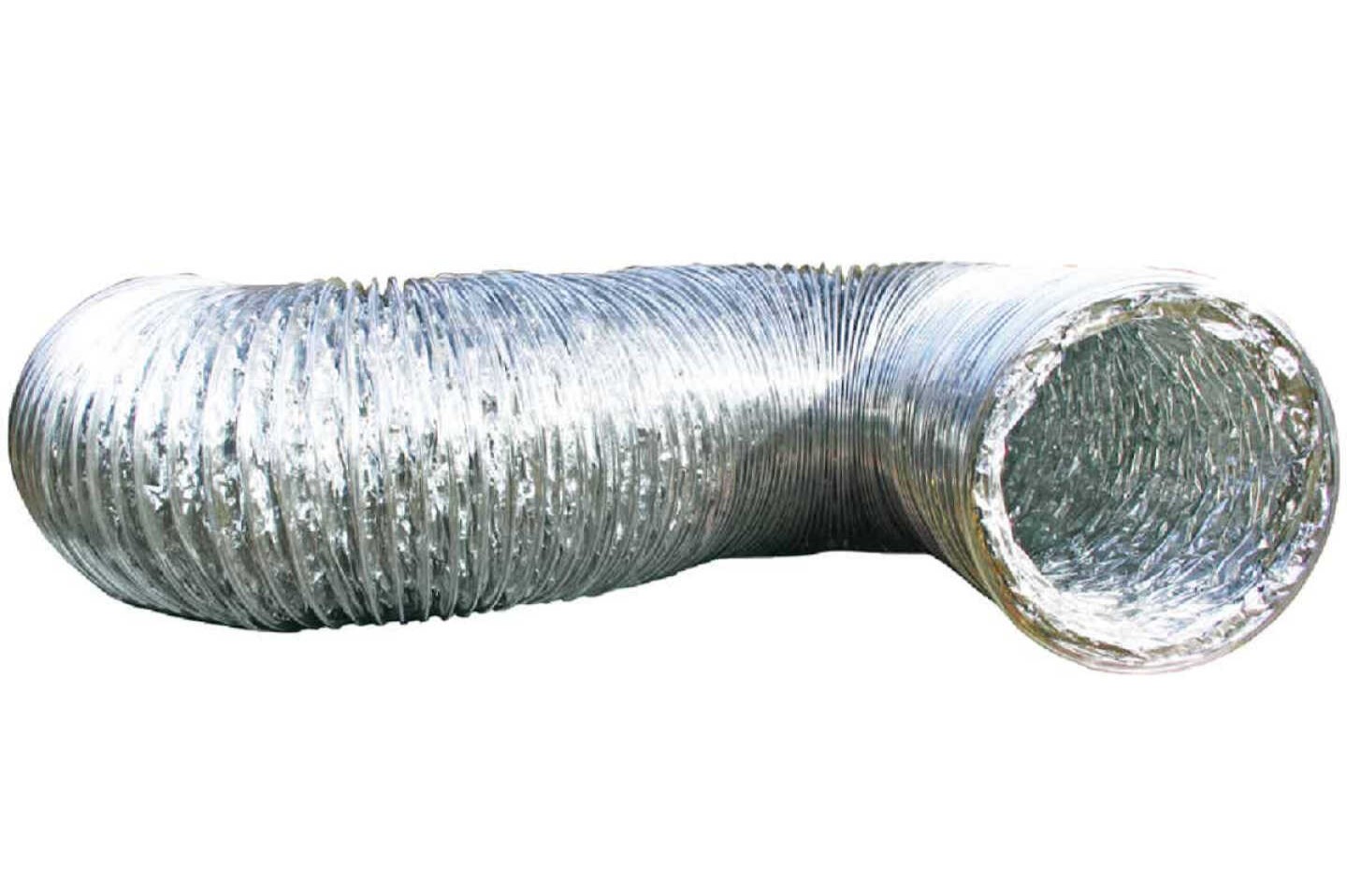

Home Maintenance
What Size Is The Dryer Vent
Modified: October 20, 2024
Learn about the proper size for your dryer vent in this comprehensive guide on home maintenance. Ensure optimal performance and safety for your laundry appliances.
(Many of the links in this article redirect to a specific reviewed product. Your purchase of these products through affiliate links helps to generate commission for Storables.com, at no extra cost. Learn more)
Introduction
Welcome to our comprehensive guide on dryer vent sizes! When it comes to maintaining your home, it’s important to pay attention to even the smallest details. In the case of your dryer, one often overlooked detail is the size of its vent. While it may seem like a minor consideration, choosing the correct dryer vent size is crucial for optimal performance and safety.
The purpose of a dryer vent is to expel hot air and moisture from your dryer to the outside of your home. If the vent size is too small, it can restrict the airflow, causing your dryer to work less efficiently and potentially leading to overheating. On the other hand, if the vent size is too large, it may not effectively remove the air and moisture, leading to condensation issues within the vent and potential mold or mildew growth.
In this article, we will explore the importance of choosing the right dryer vent size, how to determine the correct size, common vent sizes, factors to consider when selecting a vent size, the consequences of using an incorrect vent size, and steps to replace or modify your dryer vent size.
By the end of this guide, you will have a clear understanding of why dryer vent size matters and how to ensure your dryer performs at its best while maintaining the safety and efficiency of your home.
Key Takeaways:
- Choose the right dryer vent size to keep your dryer efficient and safe. Incorrect sizes can lead to overheating, mold growth, and increased energy consumption.
- Measure and replace your dryer vent size accurately to ensure optimal performance and prevent potential hazards. Consider factors like airflow, space constraints, and manufacturer’s recommendations.
Read more: What Size Vent For Dryer
Importance of Proper Dryer Vent Size
Choosing the proper size for your dryer vent is essential for several reasons. Let’s explore the importance of correctly sizing your dryer vent:
- Efficiency: A properly sized dryer vent allows for efficient airflow, which is crucial for the optimal performance of your dryer. When the vent is too small, the air cannot flow freely, causing the dryer to work harder and take longer to dry your clothes. This not only wastes energy but also increases your utility bills. Conversely, if the vent is too large, the air may not be expelled effectively, leading to inefficiency and longer drying times.
- Safety: One of the most critical reasons to use the correct dryer vent size is safety. When the vent is too small and restricts airflow, heat can build up in the dryer, increasing the risk of overheating. This can potentially lead to a fire hazard. On the other hand, oversized vents may not effectively expel the hot air, causing it to escape into enclosed spaces, leading to potential moisture damage and mold growth.
- Prevention of Moisture Issues: Proper vent sizing is essential for preventing excess moisture buildup in your dryer and vent system. If the vent is too small, it can lead to condensation inside the vent, resulting in moisture-related issues such as mold and mildew growth. This not only affects the performance of your dryer but also poses health risks to you and your family.
- Longevity of the Dryer: By ensuring the correct vent size, you can help prolong the lifespan of your dryer. When the vent is properly sized, the dryer doesn’t have to work as hard, reducing wear and tear on its components. This means fewer repairs and a longer lifespan for your appliance.
As you can see, selecting the appropriate dryer vent size is crucial for optimizing efficiency, ensuring safety, preventing moisture-related issues, and extending the lifespan of your dryer. Now let’s dive into how to determine the correct size for your dryer vent.
Determining the Correct Dryer Vent Size
Determining the correct size for your dryer vent involves a few important factors. Let’s discuss how to determine the appropriate size for your specific needs:
Manufacturer’s Recommendations: The first place to start is by checking the manufacturer’s recommendations for your dryer. The appliance’s user manual or specifications typically provide information regarding the recommended vent size. Following these guidelines ensures that you are using the correct size for optimal performance and safety.
Airflow Requirements: Another crucial factor to consider is the airflow requirements of your dryer. Different models have varying airflow needs, which directly impact the vent size. Higher capacity dryers will require larger vents to accommodate the increased airflow. It’s important to consider the specific requirements of your dryer to ensure proper ventilation.
Duct Length and Configuration: The length and configuration of your ductwork play a significant role in determining the correct vent size. Ideally, airflow should flow smoothly through the vent without any restrictions. If your ducts are long or have multiple bends, it may require a larger vent size to compensate for potential airflow limitations. Understanding the layout and design of your ductwork is crucial for selecting the appropriate vent size.
Adequate Clearance: Ensure that there is enough space around the dryer and vent to ensure adequate clearance for proper airflow. Restrictive spaces can cause the vent to become constricted, leading to reduced efficiency and potential safety hazards. A larger vent size may be necessary if there are space limitations around the dryer and vent area.
Consulting a Professional: If you are unsure about the correct vent size for your dryer, it’s always a good idea to consult with a professional. An experienced HVAC technician or appliance specialist can assess your specific setup, taking into account all the necessary factors, and recommend the appropriate vent size for optimal performance and safety.
By considering the manufacturer’s recommendations, airflow requirements, duct length and configuration, clearance, and seeking professional advice when needed, you can determine the correct dryer vent size that best suits your specific requirements. Having the right size will ensure efficient airflow, prevent safety issues, and maintain the longevity of your dryer.
Common Dryer Vent Sizes
When it comes to dryer vents, there are several standard sizes commonly used in residential settings. Let’s explore the most common dryer vent sizes:
- 4 Inches: The most prevalent size for dryer vents in residential homes is 4 inches in diameter. This size is suitable for most standard dryers and meets the requirements of many dryer manufacturers. A 4-inch vent allows for adequate airflow and ventilation.
- 3 Inches: Some older dryers may have a 3-inch vent size. While less common nowadays, it’s important to identify the correct vent size for older dryer models if you own an older home or have inherited an older appliance.
- 6 Inches: In certain cases where there is a need for increased airflow, such as with commercial or large-capacity dryers, a 6-inch vent may be required. These larger vents accommodate the higher volume of air generated by these types of dryers. It’s important to check the manufacturer’s recommendations or consult with a professional if considering a 6-inch vent.
- Other Sizes: There may be instances where a dryer vent size other than the standard sizes mentioned above is required. This can occur with specialized or unique dryer models or in specific situations where custom venting needs arise. In such cases, it’s essential to consult the manufacturer or seek professional advice to determine the appropriate vent size.
It’s important to note that even though standard vent sizes exist, the specific requirements for your dryer should always be considered. Always refer to the manufacturer’s guidelines or consult a professional to ensure you are using the correct vent size for your specific dryer model.
Now that we know about the common vent sizes, let’s delve into the factors to consider when choosing the right dryer vent size.
Factors to Consider When Choosing Dryer Vent Size
When selecting the appropriate dryer vent size, there are several factors to consider. These factors will help ensure that your chosen vent size is suitable for your specific needs and enables optimal dryer performance. Let’s explore these factors in detail:
- Dryer Capacity: Consider the capacity of your dryer when choosing the vent size. Dryers with larger capacities require greater airflow to expel hot air and moisture effectively. Higher capacity dryers may necessitate a larger vent size to accommodate the increased airflow.
- Vent Length and Configuration: The length and configuration of your dryer vent play a significant role in determining the appropriate vent size. Longer ducts or those with multiple bends can restrict airflow. In such cases, a larger vent size may be necessary to compensate for any potential airflow limitations.
- Space Constraints: Evaluate the space around your dryer and vent area. If there are restrictions that limit the airflow, such as tight corners or cramped spaces, a larger vent size may be required to maintain proper ventilation.
- Environmental Factors: Consider the climate and environmental conditions in your area. If you live in a humid climate, a larger vent size may be necessary to facilitate the expulsion of moisture more efficiently. Additionally, if you have a dryer located in an area prone to dust or lint accumulation, a larger vent can help prevent clogging and ensure optimal airflow.
- Manufacturer’s Recommendations: Always refer to the manufacturer’s recommendations for your specific dryer model. Manufacturers often stipulate the recommended vent size based on the appliance’s specifications and performance requirements. Adhering to these guidelines will ensure proper ventilation and avoid any potential warranty issues.
- Consulting a Professional: When in doubt, it’s advisable to seek the opinion of a professional. An HVAC technician or appliance specialist can assess your specific setup, take into account all the necessary factors, and provide expert guidance on selecting the appropriate vent size for your dryer.
Considering these factors will help you make an informed decision when choosing the correct dryer vent size. It’s crucial to prioritize proper airflow, efficiency, and safety to ensure optimal performance of your dryer and maintain the longevity of your appliance.
Now that we understand the factors to consider, let’s explore the potential consequences of using an incorrect dryer vent size.
Regularly clean your dryer vent to prevent lint buildup and maintain proper airflow. Use a vent brush or vacuum to remove debris and ensure the vent is the correct size for your dryer.
Read more: What Size Hole For A Dryer Vent
Consequences of Incorrect Dryer Vent Size
Using an incorrect dryer vent size can have several consequences that can impact the efficiency, safety, and overall performance of your dryer. Let’s take a look at some of the potential consequences of using an incorrect vent size:
- Reduced Efficiency: If the vent size is too small, it can restrict the airflow from the dryer, resulting in reduced efficiency. A restricted airflow means the dryer has to work harder and longer to dry your clothes, wasting energy and increasing your utility bills.
- Overheating: A dryer with an undersized vent can lead to overheating. When the hot air is not properly expelled, it can get trapped inside the dryer, causing the temperature to rise beyond safe levels. Overheating can potentially damage the dryer’s components and increase the risk of fire.
- Mold and Moisture Issues: If the vent size is too small, it can lead to condensation within the vent system. This excess moisture can cause mold and mildew growth, creating an unhealthy environment. The damp conditions can also damage the dryer and decrease its lifespan.
- Lint Buildup and Clogs: An incorrect vent size can lead to an accumulation of lint within the dryer and vent system. This lint buildup can clog the vent, preventing proper airflow and potentially causing a fire hazard. Clogs also force the dryer to work harder, leading to increased energy consumption and shorter appliance lifespan.
- Excessive Energy Consumption: Inefficient airflow due to an incorrect vent size can cause the dryer to consume more energy than necessary. This results in higher utility bills and places unnecessary strain on the appliance.
- Increased Wear and Tear: When the dryer has to work harder to compensate for an incorrect vent size, it experiences increased wear and tear on its components. This can lead to more frequent breakdowns, costly repairs, and a shortened lifespan for the appliance.
To avoid these consequences, it’s important to select the correct dryer vent size based on the manufacturer’s recommendations and the specific needs of your dryer. Proper sizing ensures efficient airflow, prevents overheating and moisture issues, reduces lint buildup and clogs, minimizes energy consumption, and extends the lifespan of your dryer.
Now, let’s move on to the next step – learning how to measure the dryer vent size.
How to Measure Dryer Vent Size
Measuring your dryer vent size is a straightforward process that requires a few simple steps. Here’s how you can accurately measure your dryer vent size:
- Locate the Vent Opening: Start by locating the vent opening on the back of your dryer. This is where the vent hose connects to the dryer.
- Measure the Diameter: Use a measuring tape or ruler to measure the diameter of the vent opening. Most dryer vents have a diameter of either 3 inches or 4 inches, but it’s always best to confirm the specific size of your vent.
- Confirm the Vent Type: In addition to measuring the diameter, it’s important to determine the type of vent you have. Dryer vents can be either rigid or flexible. Rigid vents are made of metal and provide a straight path for hot air to escape, while flexible vents are made of a foil-like material and can be bent and adjusted to fit different spaces. Understanding the type of vent you have will help ensure you select the appropriate replacement size if needed.
- Note the Length: Take note of the length of the existing vent hose. This information will be useful if you need to replace or modify the vent size in the future.
Remember, accurate measurement of your dryer vent size is crucial to ensure a proper fit and optimal performance. If you’re unsure about measuring the vent size or have a vent that is difficult to access, consider seeking the assistance of a professional. They can measure the vent size accurately and provide expert advice on selecting the right size for your specific needs.
Now that you know how to measure your dryer vent size, let’s move on to the steps involved in replacing or modifying the vent size.
Steps to Replace or Modify Dryer Vent Size
If you need to replace or modify your dryer vent size, follow these step-by-step instructions to ensure a successful and efficient process:
- Gather the Necessary Tools: Before you begin, gather the tools you’ll need for the job. These typically include a screwdriver, pliers, duct tape, a measuring tape, and the appropriate size vent hose or coupling. Ensure you have everything on hand before starting the replacement or modification process.
- Disconnect the Dryer: Start by disconnecting the dryer from the power source. Unplug the power cord from the electrical outlet or trip the circuit breaker dedicated to the dryer. This ensures safety during the process.
- Remove the Old Vent: Carefully detach the old vent from the back of the dryer. Depending on the type of vent, it may be connected with screws, clamps, or simply slid onto a pipe. Use the appropriate tools to disconnect the vent and remove it from the dryer.
- Measure and Cut: Measure the required length for the new vent hose or coupling. Use a measuring tape to ensure accuracy. Once measured, use a sharp utility knife or metal snips to cut the vent hose or coupling to the desired length. Take care to make clean, straight cuts for a proper fit.
- Attach the New Vent: Connect the new vent hose or coupling to the back of the dryer. Secure it in place using the appropriate method for the type of vent you have. For rigid vents, use screws or clamps to hold it securely. For flexible vents, slide the vent hose onto the pipe and ensure it is tightly fitted.
- Secure the Connections: Once the new vent is attached, use duct tape or hose clamps to secure the connections. This helps to ensure a tight seal and prevent any air leaks. Make sure the connections are snug and secure.
- Reconnect the Dryer: Plug the power cord back into the electrical outlet or turn on the circuit breaker dedicated to the dryer. Ensure that the dryer is properly connected to a power source before proceeding.
- Test the Dryer: Once everything is securely in place, turn on the dryer and test its functionality. Allow the dryer to run for a short cycle to ensure that the new vent is properly expelling hot air and moisture. Check for any signs of air leakage or issues with the vent installation.
- Monitor for Proper Operation: Keep an eye on the dryer’s performance in the following days to ensure it is operating efficiently with the new vent size. Check for any unusual sounds, overheating, or lint buildup. If you notice any issues, consult a professional for further assistance.
Following these steps will help you successfully replace or modify your dryer vent size. If you’re unsure about any part of the process or encounter difficulties, consider seeking the help of a professional to ensure proper installation and optimal performance.
Now that you know the steps to replace or modify the dryer vent size, it’s important to understand the significance of these actions for maintaining a safe and efficient home environment.
Conclusion
Choosing the correct dryer vent size is vital for maintaining the efficiency, safety, and longevity of your dryer. Improper vent sizing can lead to reduced airflow, overheating, moisture issues, increased energy consumption, lint buildup, and even potential fire hazards. By understanding the importance of vent size, measuring accurately, and considering factors such as dryer capacity, vent length, space constraints, and manufacturer’s recommendations, you can ensure the right vent size for your specific needs.
In this comprehensive guide, we’ve discussed the importance of proper dryer vent size, the consequences of using an incorrect size, and the steps involved in determining the correct vent size. We’ve also covered common vent sizes and factors to consider when choosing the vent size, as well as the steps to replace or modify your dryer vent size.
Remember to consult the manufacturer’s recommendations, measure your vent accurately, and, if needed, seek the assistance of a professional for guidance. By selecting the appropriate vent size, you will improve the efficiency, safety, and performance of your dryer while ensuring the well-being of your home.
Proper maintenance and attention to detail are essential in creating a safe and functional living environment. So, take the time to assess your dryer vent size and make any necessary adjustments. It’s a small investment that can have a significant impact on your home’s efficiency and safety in the long run.
Now that you’re equipped with the knowledge to choose the right dryer vent size, go ahead and take the necessary steps to optimize your dryer’s performance and enjoy peace of mind knowing you’ve taken an important step towards maintaining a safe and efficient home.
Frequently Asked Questions about What Size Is The Dryer Vent
Was this page helpful?
At Storables.com, we guarantee accurate and reliable information. Our content, validated by Expert Board Contributors, is crafted following stringent Editorial Policies. We're committed to providing you with well-researched, expert-backed insights for all your informational needs.
